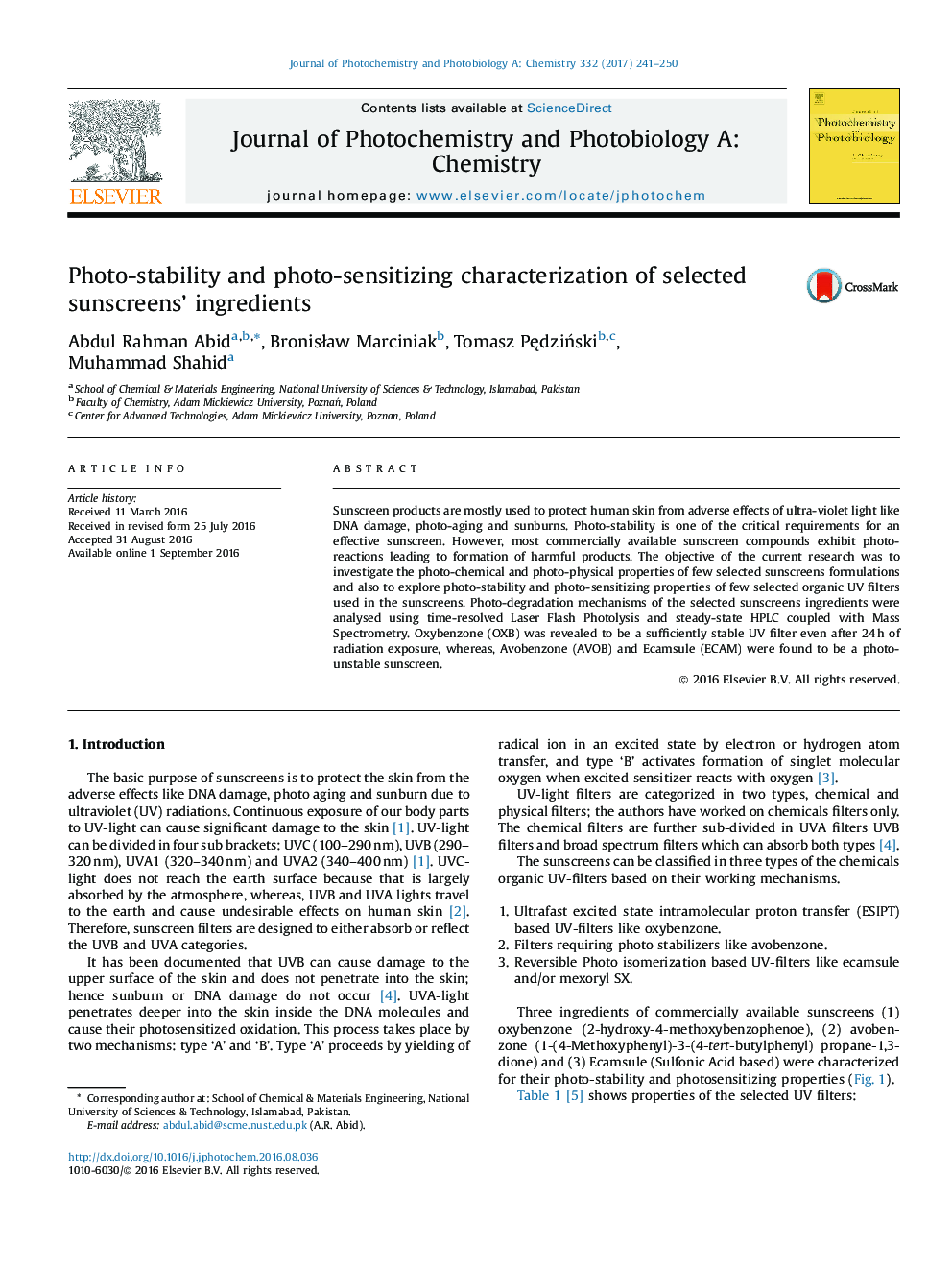| Article ID | Journal | Published Year | Pages | File Type |
|---|---|---|---|---|
| 4754216 | Journal of Photochemistry and Photobiology A: Chemistry | 2017 | 10 Pages |
â¢Sunscreens products mostly used to protect the skin from adverse effect of ultra-violet light and photostability is one of a critical requirement of an effective sunscreen.â¢Each of sunscreen product ingredient represents a different mechanism of energy dissipation for UV-protection.â¢Oxybenzone (OXB) is found to be a very stable UV filter.â¢Avobenzone (AVOB) is known to be rather unstable UV sunscreen and it photodegrades with time of irradiation.â¢Ecamsule (ECAM) is also found to be very photounstable sunscreen and photodegraded with irradiation of UV light.
Sunscreen products are mostly used to protect human skin from adverse effects of ultra-violet light like DNA damage, photo-aging and sunburns. Photo-stability is one of the critical requirements for an effective sunscreen. However, most commercially available sunscreen compounds exhibit photo-reactions leading to formation of harmful products. The objective of the current research was to investigate the photo-chemical and photo-physical properties of few selected sunscreens formulations and also to explore photo-stability and photo-sensitizing properties of few selected organic UV filters used in the sunscreens. Photo-degradation mechanisms of the selected sunscreens ingredients were analysed using time-resolved Laser Flash Photolysis and steady-state HPLC coupled with Mass Spectrometry. Oxybenzone (OXB) was revealed to be a sufficiently stable UV filter even after 24Â h of radiation exposure, whereas, Avobenzone (AVOB) and Ecamsule (ECAM) were found to be a photo-unstable sunscreen.
